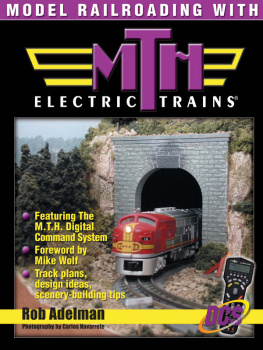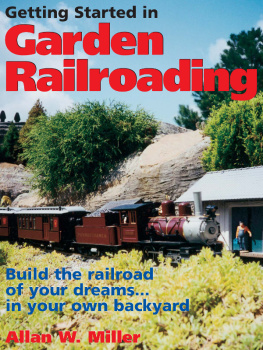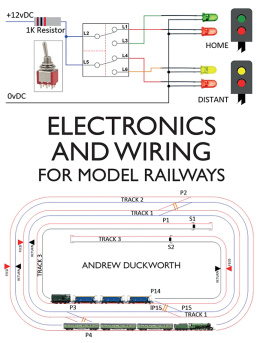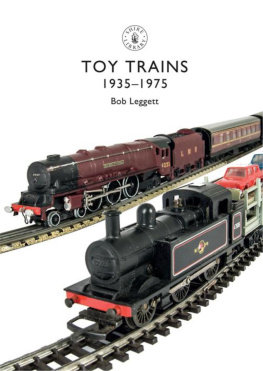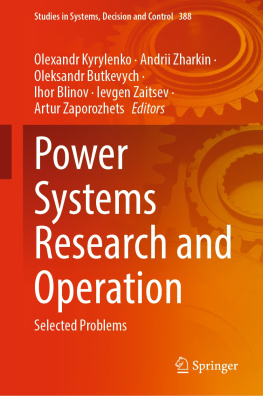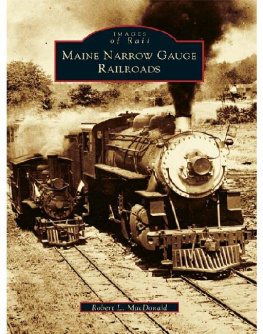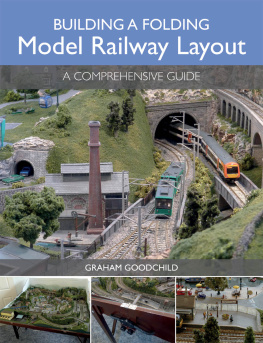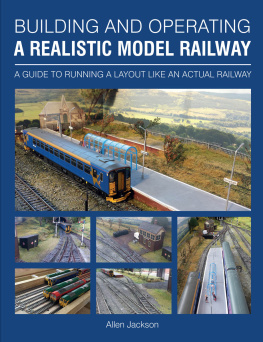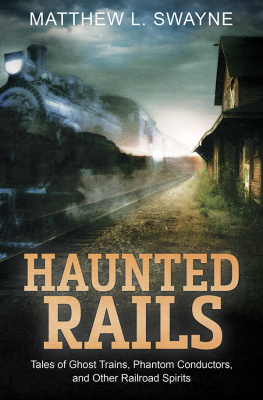
Model Railroading
with M.T.H.
Electric Trains
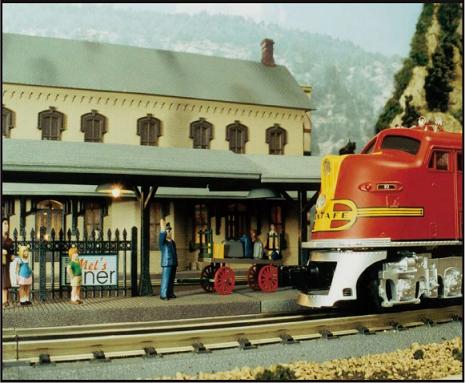
Rob Adelman
Photography by Carlos Navarrete
Text 2002 by Robert Adelman
All rights reserved.
Design and compilation 2002 by Krause Publications, Inc.
M.T.H. photographic train images and all related M.T.H. Electric Trains logos 2002 by M.T.H. Electric Trains, used with permission.
No portion of this publication may be reproduced or transmitted in any form or by any means, electronic or mechanical, including photocopy, recording, or any information storage and retrieval system, without permission in writing from the publisher, except by a reviewer who may quote brief passages in a critical article or review to be printed in a magazine or newspaper, or electronically transmitted on radio or television.
Published by

Please call or write for our free catalog of publications. To place an order or obtain a free catalog, please call (800) 258-0929. Please use our regular business telephone (715) 445-2214 for editorial comment or further information.
Library of Congress Catalog Number 2002105775
ISBN 0-87349-350-8
eISBN: 978-1-44022-555-0
Dedication
I would like to dedicate this book to my Dad. The time you spent playing trains with me on our living room flooras I grew up was absolutely priceless.
Acknowledgments
I would like to take a few moments to convey my deep appreciation to those who helped in the process of writing this book. It was a long and arduous road, but there is no doubt in my mind that, without the participation of the following people and companies, this book would have never made it to print.
First, I would like to thank Mike Wolf, president and chief executive officer of M.T.H. Electric Trains. Mike, without your vision and willingness to take bold and innovative risks, the O Gauge segment of model railroading would never have experienced the renaissance in the marketplace that it has over the last eight years. Thank you, Andy Edleman and Kristin Bailey of M.T.H. Electric Trains, for your time and willingness to help with the items I needed for the Santa Fe Raton Pass Railroad, and also for answering questions I had throughout the entire process of writing the book. Thank you to Ruean Holt and the good folks at Woodland Scenics for providing your products for the train layout. Thank you to BackDrop Warehouse for your willingness to take part in this book. Many heartfelt thanks to Allan Miller; you not only helped this book project get going, but you contributed greatly by giving your advice and direction regarding the writing, as well as helping me with the text. Thank you also to the TOOGs: Clktyclack, Gazaer, HIBBYGIBI, HOLIT, Hydra5, Jscu870705, MacCam98, MAdams4228, OGColl, O Trains, Razz702, RTTAZ54, Shrugger59, SSW4ME, SteveJMJr, and TAG 18. I appreciate the help and input from each of you, along with your friendship. We have all built a strong bond through our interaction via AOL and the Internet, and the deep knowledge of, and dedication to, the hobby by each of you is an inspiration to me. A great big thank you to my wonderful father-in-law, Ted Cheatham; thank you, Ted, for your immense help and advice in constructing the Santa Fe Raton Pass Railroad for the book. And thank you to Kenny Barnes, Bob Hill, Jim Jenkens, Cheryl McClain, Dan Pitcock, and Frank Wilkins. I would also like to thank my dad; if you hadnt introduced me to toy trains at the age of five, I may never have experienced this wonderful hobby. I additionally must give enormous thanks to my lovely wife, Amie, and daughter, Elizabeth; thank you so much for your patience, support, and many times sacrificial giving towards the completion of this book. Last, but certainly not least, I would like to thank my Lord and Savior Jesus Christ; for it is only through You that all things are possible including this book.
Table of Contents
2. American Steam Locomotive Wheel Arrangements, Whyte
Classification System
3. M.T.H. Electric Trains Item List for the Santa Fe Raton Pass Railroad:
M.T.H. RealTrax, M.T.H. Accessories, and M.T.H. Digital Command System Components
Foreword
After more than 100 years of action, model railroading may well have entered its greatest era in the 21st century. A hobby long steeped in tradition continues to carry forth its basic appeal of miniaturization, movement and action. Unlike the second half of its first century, however, model railroadings entry in the new millennium is infused with products featuring state-of-the-art technology designed to lift the hobby from the gloom of a basement to the brightness of a family room.
Fueled by phenomenal growth spurred on primarily by baby-boom-generation men, model railroading now has a chance to appeal to an entirely new generation of consumers, thanks to incredible advances in technology and product choices. With virtually every gauge supported by a half a dozen or more manufacturers, modelers can find miniatures of almost every train, railcar, building, track configuration, and track-side component that ever existed in real life. In the O gauge marketplace, product choice has outpaced all other gauges in the past decade. During this revolution, M.T.H. Electric Trains has proudly led all manufacturers in product expansion through the promotion of over 5,200 different M.T.H. items since 1992.
Technology has played an even more important role than greater product choices in the growth of O gauge model railroading. For the most part, model railroading relied on the same technology as that found in toy train products manufactured in the 1940s and 50s. By the early 1990s, digital sound was heard in M.T.H. products. Heralded for their sound quality, these sound-equipped locomotives began to awaken model railroading enthusiasts to the potential of owning a realistic looking and operating model railroad. While praised for their quality and realism, these early digital trains still lacked one primary feature needed to make each a unique element on the layout.
The single greatest development in model railroading has been the transition from fixed or conventional control to command control, where each element of the model railroad layout can be independently operated even multiple engines on the same track at the same time! Historically, control over toy train locomotives had been accomplished in the same manner as that used in the early 20th century. A power supply or transformer energized the rails of the track, which caused all engines to move at speeds governed by the amount of current on the rails. Independent control over each locomotive like that in real life was not easily obtainable. A command control system elevates model railroading to an almost 3D digital video game, in which operators independently select elements of the layout (locomotives, accessories, track switches, and more), and operate them through a wireless, remote control. With the release of M.T.H.s Digital Command System or DCS, this concept has been elevated even further thanks to incredible advances made possible through the inclusion of the latest wireless technology. Hundreds of features are included in DCS that allow operators almost unimaginable control of their layout from just a few years ago.
More important than the features found in a command control system like DCS is the appeal such control will have to younger consumers those children and grandchildren of the baby boomers who have long supported the model railroading tradition. For the first time in more than fifty years, model railroading has a chance to say to a new enthusiast, Hey, this is a cool hobby. With hundreds of programmable options, future computer interface control, and the ability to customize the model railroad to the operators individual tastes, DCS favorably compares to todays more well-known consumer electronic play toys video and pc games. Yet, it provides more wholesomeness, educational value, and practical skill lessons than any video or pc game could hope to offer.
Next page
